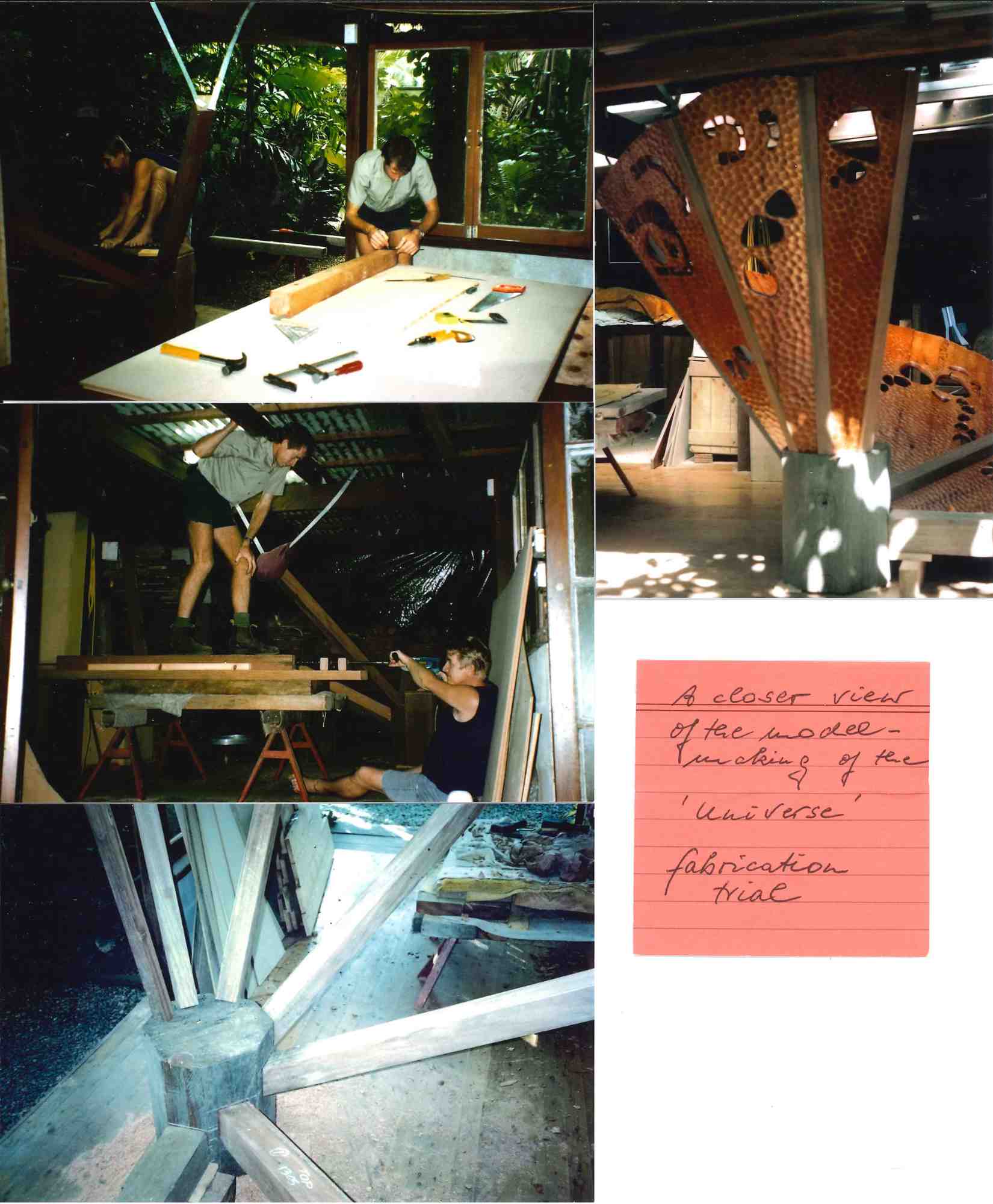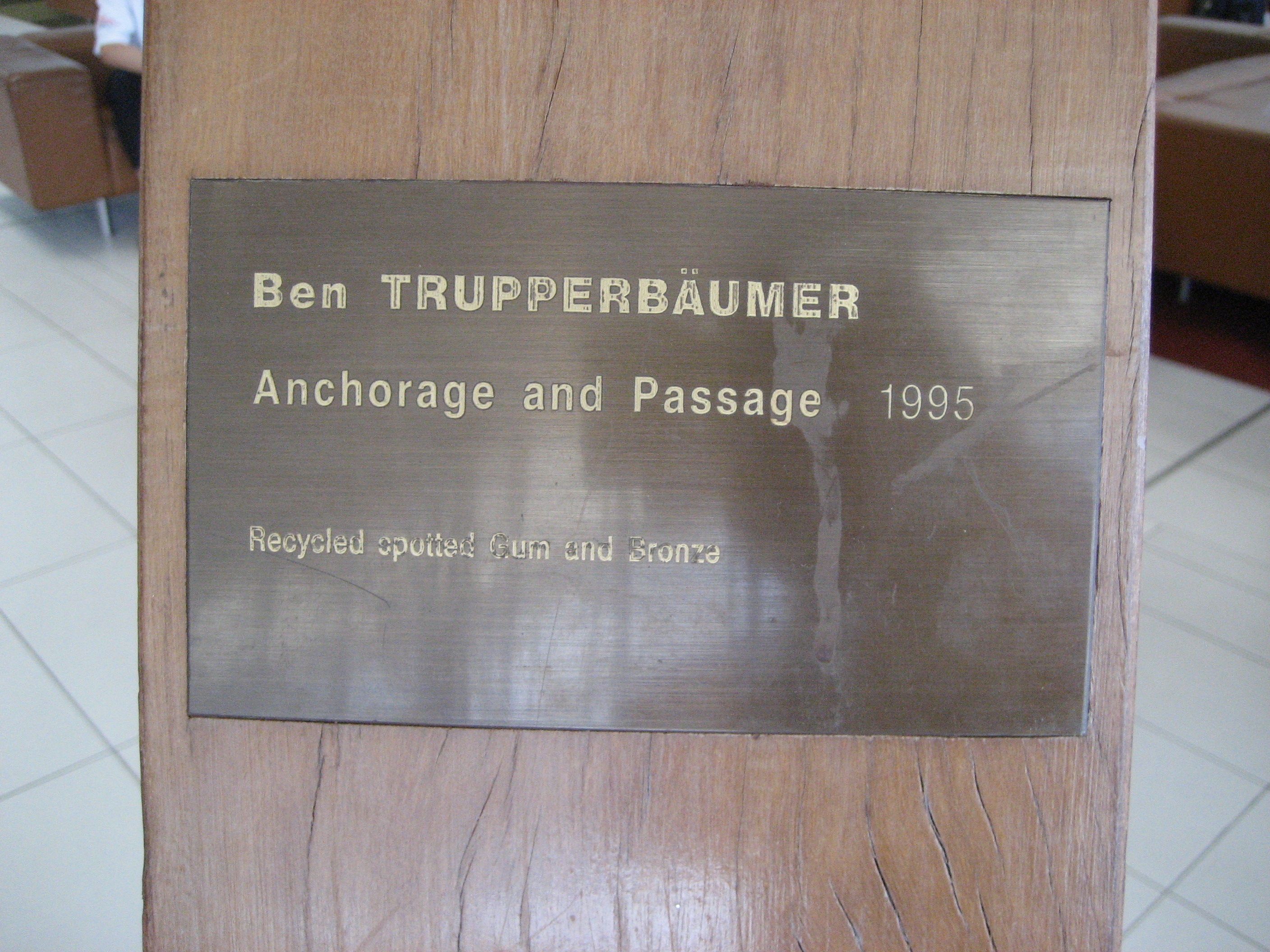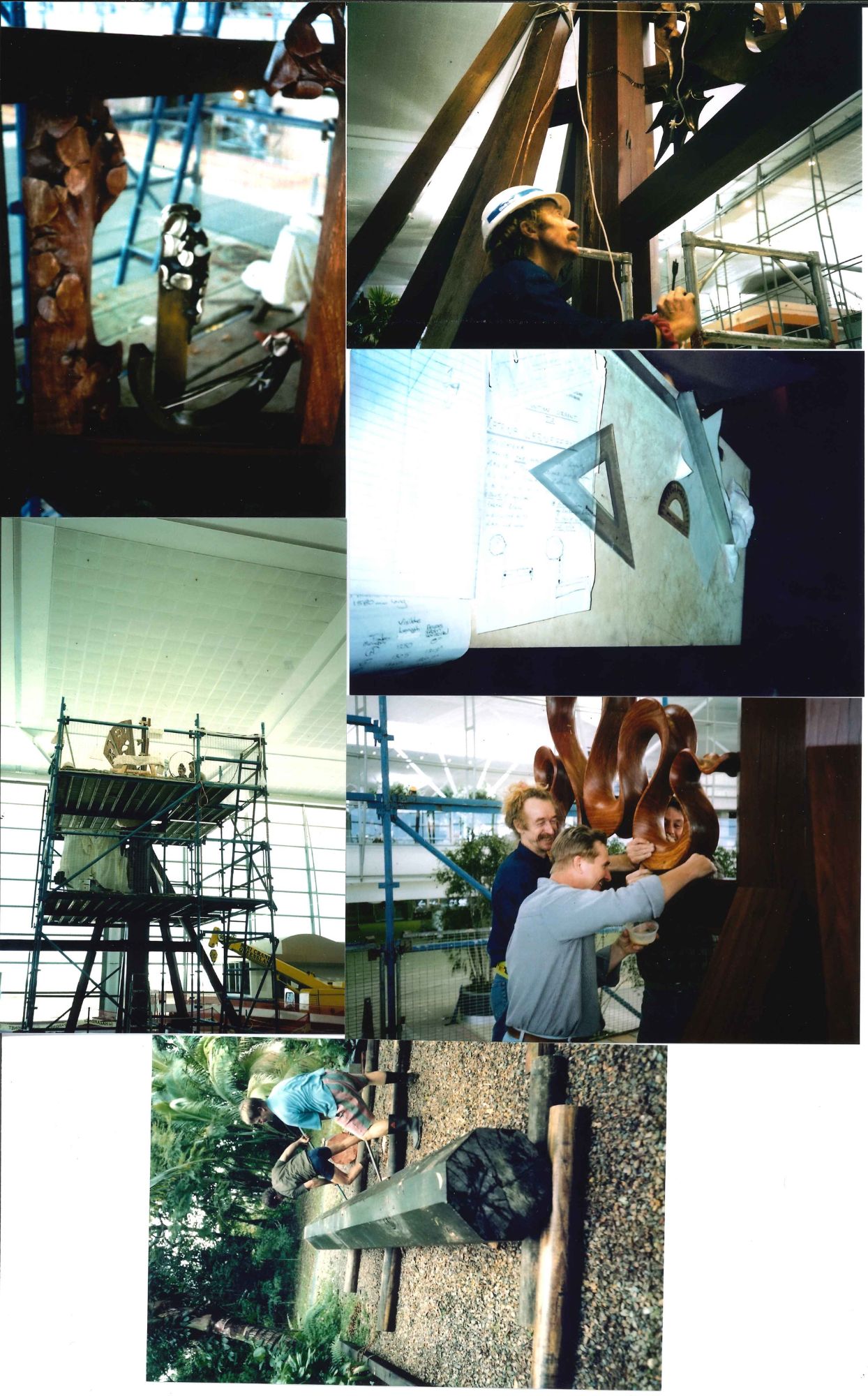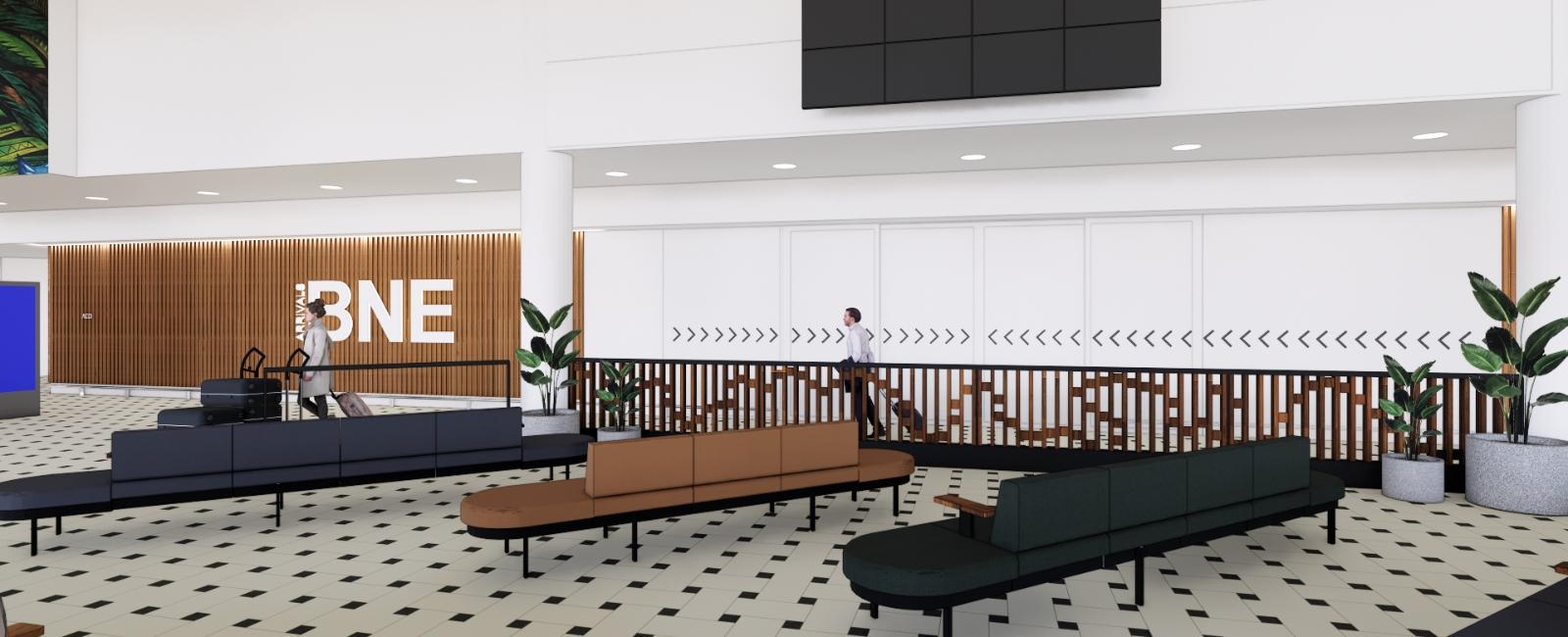
As Brisbane Airport enters its next evolution as part of the Future BNE transformation, so too is one of the terminal’s much loved public artworks.
Sustainability is at the heart of everything Brisbane Airport does, from the way it builds and operates, to how it connects with people and partners. One artwork that embodies this commitment is Anchor & Passage by artist Ben Trupperbaumer, now entering its fourth lifecycle in the International Terminal’s Arrivals Hall.
Working with the artist to re-purpose the artwork, the new iteration seeks to weave a narrative of the terminal’s history and commitment to sustainability, while minimising construction waste.
The artwork was first commissioned for the 1995 opening of the International Terminal and was located on Level 3 in the Departures Lounge.

The three-dimensional sculpture, made predominately of timber, represents culture, place and belonging, as well as the transformations we undertake through life’s passages.
Ben Trupperbaumer created Anchorage and Passage with recycled timber as a testament to the endurance of materials and their ability to evolve and be reinterpreted.
The central dominant component is a supportive backbone (a spine) from which multiple structural elements arise to form the foundations that physically and metaphorically support its intention never to topple.
In 2014, it was moved by crane to Level 4 and in 2024 it was decommissioned and dismantled to make way for the large-scale transformation of the International Terminal.
In 2025, elements of the sculpture were reimagined once more on Level 2 of the Arrivals Hall, woven among new timber features, from balustrades to armrests, continuing to connect travellers with its story of grounding and journey.
“This bespoke project marks the next evolution,” says Fiona Kelly, Project Manager at Brisbane Airport. “It brings the original artwork into the terminal’s new joinery and furniture, giving it a fresh place in the passenger experience.”
Spanning several metres in length and constructed primarily from timber, the sculpture’s sheer scale made its decommissioning a complex and carefully managed process, with each piece thoughtfully dismantled and repurposed into new joinery and furniture throughout the terminal.
Artist Ben Trupperbaumer reflects on the magnitude of repurposing the artwork, acknowledging the dedication to the project and the ongoing focus on sustainability.

“The possibility of finding another life for this piece of work is very challenging.
“What I really appreciated was the effort taken to relocate a substantial piece of work and rebuild. It showed a commitment to the work. It was a compliment to me as well,” Ben reflected.
Brisbane-based timber company Modinex played a key role in the process, applying their expertise adapt and repurpose materials from the original artwork. Their craftsmanship ensured that valuable resources could be given another life.
Sophie Rodgers, Chief Marketing Officer at Modinex shares “Projects like this give us an opportunity to honour materials and stories that are already part of a place. We’re preserving a piece of its history and giving it a new life in a way that people can continue to experience and enjoy.”
Elyse Rann, Senior Interior Designer at StudioSpillane, the interior design company delivering the refurbishment, explains the primary objective of the project is to retain as much material by finding creative ways to reuse these resources so they can be enjoyed by future generations.
“We’re passionate about making great places for people, and specifically sustainable places. A lot of our work and expertise is in recycling and repurposing and giving materials a new life.

This project is a really great opportunity to keep materials within the building and do it in a way that it can stay in the building for another 30 years,” she said.
Tiana Wetzel, Sustainability Lead at Brisbane Airport, explains how reclaimed artwork project is another way the airport is putting sustainable design into practice.
“We’re focused on sustainable design at Brisbane Airport because we want to grow responsibly to create a leading sustainable airport that future generations can be proud of.
“We’re repurposing these materials into our existing projects because it’s about reducing our construction waste and driving innovation,” she explains.

